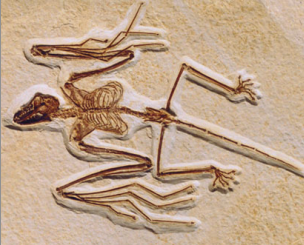New Scientist
Image: Nature
The earliest fossil bat yet found suggests that the species’ trademark echolocation had yet to evolve.
Nancy Simmons of the American Museum of Natural History, New York, and her team found the fossil in the 52-million-year-old Green River Formation in Wyoming. The species, Onychonycteris finneyi, had a strong ribcage and long finger bones, suggesting that it could fly, and its teeth were similar to those of modern insect-eating bats. But it lacked the special ear-bone modifications needed for echolocation – the ability to use reflected sound to find and identify objects while flying – and probably flew “deaf” (Nature, DOI: 10.1038/nature06549).
“Without echolocation, Onychonycteris would probably not have been good at catching insects in flight,” says Simmons, though it might have used vision or smell to help find insect prey. Read more on newscientist.com…








